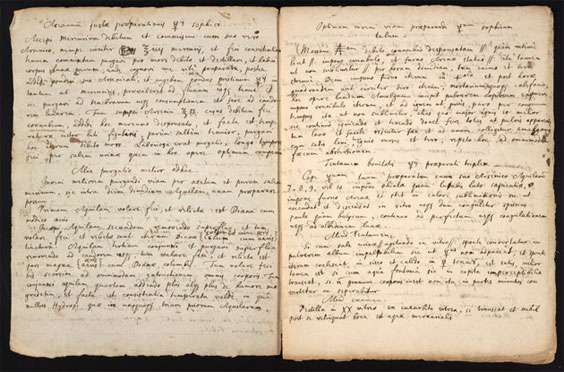April 8, 2016 report
Newly purchased Newton alchemy manuscript to be put online

(Phys.org)—A 17th century document written by Isaac Newton has been purchased from a private owner, by a nonprofit called the Chemical Heritage Foundation, and they have plans to put the whole thing online. What is intriguing about the manuscript is that the main page is a recipe hand-copied by Newton that describes a method of creating "sophick" mercury—a supposed necessary ingredient for making the Philosopher's stone.
So great is Newton's stature in the science world, that mention of his dalliance in alchemy has been cause for not just embarrassment, but for attempts to hide it as one of his great passions. The genius, the father of modern physics and co-inventor of calculus, is believed to have written over a million words on alchemy, which historians have lately begun to note, was originally, a synonym for chemistry.
The manuscript purchased by CHF began, it is believed, as a simple hand-copy of a recipe created by George Starkey, a well known American alchemist and sometime writer. Newton than added notes to the text and later, apparently turned the document over and used the blank side to write a procedure for subliming lead ore, an endeavor that he apparently worked on for many years, once again, as part of his desire to make the Philosopher's stone. Newton was apparently eager to create the mythical substance that would change simple base metals such as lead, into gold, making himself rich, though it might also be noted, that the original Philosopher's stone was also supposed to cure any disease and allow people to become immortal.
CHF has announced plans to put the entire text (which has been in private hands for several decades) online, allowing anyone who wishes (and is able to read Latin) to consider the recipes and note the musings of one of the great minds of history. In recent years, historians have come to offer a more lenient look at the negative reputation of alchemy, noting that in many ways, it led to the development of what is now known as the scientific method. Some have noted, for example, that Newton's work with natural light—showing for the first time that it is actually made of many colors—might have been a direct result of his work with alchemic processes that involved breaking down compounds into their basic components.
More information: www.chemheritage.org/about/new … onal-geographic.aspx
© 2016 Phys.org





















